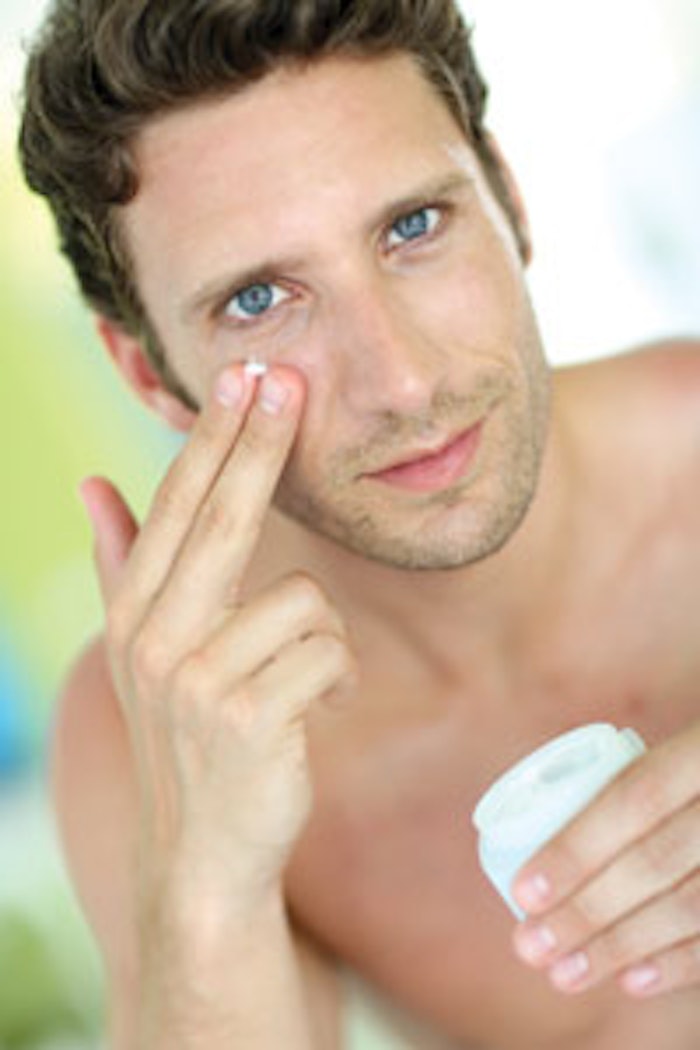
There is a significant shift occurring in the men’s skin care industry. Men are rapidly becoming savvy skin care consumers, trading in their all-purpose moisturizer or cleanser for more specific solutions to their individual skin challenges.
According to market researchers at the NPD Group, skin care will be the most dynamic segment in men’s grooming.1 In 2012, this segment of sales increased 6%, reaching $45.5 million, proving men’s skin care is on the upward trend.1
With an increasing number of men embracing good skin care practices, professionals will benefit from knowing how to work with men’s skin, particularly the different nuances of their respective age groups. (See Working With Generations of Men.)
Although there’s no one-size-fits-all approach that works for the various age groups across the board, there are some common challenges men combat throughout the generations. With the proper tools and treatments (See Treatment How-to: Rejuvenating Peel for Men), skin care professionals can help male clients tackle these issues. Keep in mind, a large part of the process will also involve educating them about how to care for their skin at home.
Men and their skin
Do men really have different skin than women? There are many similarities and, of course, many of the products and treatments used on female clients still work very effectively on men’s skin, but there are also some key differences.
Men typically have:
- A thicker dermis and epidermis;
- Higher sensitivity;
- A different hormonal make-up;
- More sebum;
- Larger pores; and
- More facial hair than women.
Some studies have shown a difference in the acidity of the pH level of men’s skin, as well, changing the make-up of their acid mantle, which is a combination of sebum and perspiration.4 Additionally, men battle skin issues specifically related to shaving, such as ingrown hairs, dryness and razor burn.
To compensate for possible differences in the acid mantle, skin care professionals should be cognizant of the pH levels of the cleansers and topical products used. Products with higher pH levels may elevate the overall skin pH and disrupt the acid mantle, which serves as an important protective barrier. Of course, there are many other components that will impact the skin’s pH, such as diet, sleep, medications and environment, but skin care professionals do have an opportunity to help clients get back on the right track.
Testosterone also plays a significant role. In the epidermis and dermis, it is responsible for increasing collagen production, blood flow and the number of granular cells. With sebaceous glands, testosterone stimulates the production of sebum and toughens hairs in the follicle. For any treatment or formula to be effective, it must address men’s sebum, hair and sensitivity factors, as well as their thicker epidermis and lower pH level.
Getting men on the right track
There are three key steps that men in any age group must implement for healthy skin.
1. Cleanse. It’s important to talk to men about the process, including how to do it and for how long.
2. Exfoliate. Men are already doing this with their daily shave—they just need to extend the process to the rest of their face. Talk with clients about frequency and the proper pressure to use when applying.
3. Protect. Zinc oxide, along with skin-fortifying antioxidants, helps guard against free radical damage, nourish the skin and prevent premature aging. Be sure to end every treatment with a protective element.
Also, talk with clients about how their lifestyle can impact the health of their skin. Getting adequate sleep, not smoking, eating less sugar and more fresh foods, keeping stress at bay and exercising can significantly improve the appearance of the skin.
An emphasis on education
When working with male clients, keep in mind your biggest asset will be education. Not only educating yourself on the nuances of men’s skin, and the ingredients and treatments that work best for them, but also arming them with this knowledge. Once they understand, they are more likely to adopt proper skin care methods, become loyal clients and make their skin care purchases from your retail area.
References
- www.prweb.com/releases/2012/8/prweb9830734.htm
- https://www.cancer.org/
- www.acne.org/adult-acne.html
- www.rhondaallison.com/downloads/RAW_book.pdf
(All accessed May 9, 2013)












